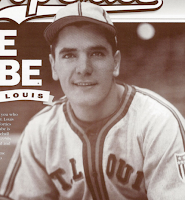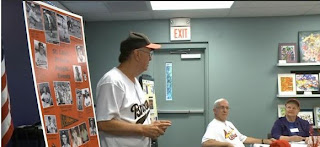ST. LOUIS -- If you're a baseball fan, you probably know Bill DeWitt Jr. as the chairman and chief executive officer of the Cardinals since his group bought the team in 1996.
DeWitt has seen remarkable success during his time in charge, with 10 playoff appearances, three National League pennants and a pair of World Series championships in his first 17 years. The Cardinals look like a safe bet to make it 11 appearances in 2013.
But DeWitt also is in charge of what could be an awkward stewardship of another team's legacy: the St. Louis Browns. Much like the Philadelphia Phillies and Boston Red Sox, the Cardinals are the survivor in what was once a two-team town.
But the Athletics, having moved to Kansas City and then Oakland, and the Braves, once in Boston, then Milwaukee, before settling in Atlanta, have a continuity, from team name to a history they seem to happily draw from. When the Browns moved to Baltimore in 1954 and became the Orioles, they left the name and the team records behind.
The means it falls to the Cardinals, who shared a home (Sportsman's Park) with the Browns but not an identity, to honor them.
DeWitt is perfectly suited to do so. After all, Eddie Gaedel, the only midget to ever play Major League Baseball, wore DeWitt's St. Louis Browns uniform.
August 19, 1951. The second game of a doubleheader. And one of the great baseball executives ever, Bill Veeck, hired Gaedel to lead off. But naturally, he needed proper attire.
Veeck's father, Bill DeWitt Sr., had an interest in the Browns at the time. He and his brother
had once sold peanuts at Sportsman's Park. Now, the proud father and team owner had made certain the Browns fashioned a uniform, just for DeWitt, Jr.
You know, until August, when a midget needed it.
"I had an official Browns uniform that was issued, sized to fit me," DeWitt Jr. proudly recalled as we chatted in his office at Busch Stadium Friday afternoon. "It's not like today, when you have different uniforms for different days. You'd get 'em at the beginning of the year, and at the end of the year, you'd give them to minor league clubs. My father [had] sold [the Browns] to Bill Veeck, but was still active in the operations."
So when the need came up, after scrambling for an answer, Veeck and the elder DeWitt settled on the uniform, and the younger DeWitt was happy to donate it to the cause.
"It was 1951. So I was nine. And my uniform was actually a little big on him, as a nine year old," DeWitt recalled, laughing. "So I still have it, the 1/8. It's on loan to the Hall of Fame," DeWitt added, matter-of-factly, as if we all of some memories of things we owned at nine years old now on loan to Cooperstown.
There'll be a place for Gaedel's jersey and other Browns memorabilia next year, when the Cardinal Nation Museum serves as one destination within the
long-awaited Baseball Village, loudly getting built next to Busch Stadium as I entered Friday afternoon. And of course, there's the statue of George Sisler, who DeWitt referred to as "the greatest Brown of them all," amongst Stan Musial, Bob Gibson and Dizzy Dean, though Sisler never played a game for the Cardinals.
But DeWitt takes his role as a link to the Browns seriously, doing more than just finding a place for artifacts or statues.
"I went to a funeral this morning of Babe Martin," DeWitt said. "Who was 93 years old, and I didn't even know this, but the head of the Browns' fan club was there, and he said, 'You know, he was the last player of either the Browns or the Cardinals of the '44 World Series."
Click here for the rest of the story:
http://www.sportsonearth.com/article/56578066/






















